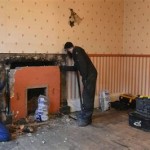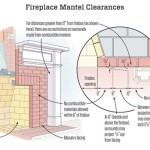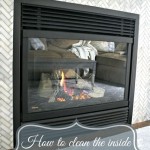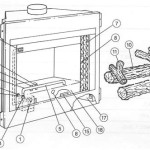Rock Gas Fireplaces: A Comprehensive Guide
Rock gas fireplaces offer a compelling blend of aesthetic appeal and functional heating. They serve as a focal point in living spaces, providing the warmth and ambiance of a traditional fireplace with the convenience and efficiency of gas fuel. Understanding the components, installation considerations, maintenance requirements, and design possibilities is crucial for anyone considering incorporating a rock gas fireplace into their home.
These fireplaces, unlike traditional wood-burning models, utilize a gas burner system concealed within an enclosure constructed, at least partially, of stone, rock, or materials that convincingly mimic the appearance of natural stone. The visual effect is a fireplace that appears to be built from the earth itself, lending a rustic or naturally elegant aesthetic to the room. The gas fuel source, either natural gas or propane, provides a consistent and controllable flame, bypassing the mess and effort associated with wood fires.
The selection process for a rock gas fireplace should involve careful consideration of factors such as the size of the space to be heated, the available venting options, the desired aesthetic, and the budgetary constraints. Each of these elements will influence the type of unit selected and the overall cost of installation and operation.
Key Point 1: Understanding the Components of a Rock Gas Fireplace
A rock gas fireplace is more than just decorative stones arranged around a flame. It's a complex system with several key components working in concert. A thorough understanding of these components is essential for making informed decisions about purchase, installation, and maintenance.
First, the
gas burner
is the heart of the fireplace. It's a precisely engineered device that mixes gas and air to create a controlled flame. Burner designs vary, impacting the flame appearance, heat output, and efficiency. Options range from simple, linear burners that produce a uniform flame to more complex multi-burner systems that create a more realistic and dynamic fire effect.Second, the
firebox
is the enclosure that houses the burner and directs the heat. It's typically made of steel or cast iron, materials chosen for their heat resistance and durability. The firebox must be properly insulated to prevent heat loss and ensure safe operation. The interior of the firebox is often lined with refractory materials that help to radiate heat and enhance the visual appeal of the flames.Third, the
rock or stone facing
is the visible exterior of the fireplace. This is where the aesthetics come into play. The facing can be constructed from a wide variety of natural or manufactured stones, each with its unique color, texture, and pattern. The choice of facing material significantly impacts the overall look and feel of the fireplace.Fourth, the
venting system
is critical for safely removing combustion byproducts, such as carbon dioxide and water vapor, from the home. Gas fireplaces require either a direct vent, B-vent, or vent-free system. Direct vent systems draw combustion air from outside and exhaust directly outside, making them the safest and most efficient option. B-vent systems use existing chimneys, while vent-free systems, though convenient, are subject to restrictions in some areas due to indoor air quality concerns.Finally, the
control system
allows users to regulate the flame height, heat output, and sometimes even the blower fan speed. Control systems can range from simple on/off switches to sophisticated electronic systems with remote controls, timers, and thermostat capabilities. Some models offer smart home integration for remote control and monitoring via a smartphone or tablet.Key Point 2: Installation Considerations for Rock Gas Fireplaces
The installation of a rock gas fireplace is a complex process that must be performed by a qualified professional. Improper installation can lead to serious safety hazards, including gas leaks, carbon monoxide poisoning, and fire risks. Several factors must be considered before and during the installation process.
Location:
The placement of the fireplace is crucial. It should be located in a well-ventilated area away from flammable materials. Consider the existing structural elements of the home, such as load-bearing walls and electrical wiring. The location must also be accessible for gas line connection and venting.Venting:
Proper venting is paramount. The type of venting system required will depend on the fireplace model and local building codes. Direct vent systems require a clear path to the exterior of the building, while B-vent systems must be connected to a properly sized and inspected chimney. Vent-free systems, if permitted, require careful consideration of room size and ventilation.Gas Line Connection:
A qualified gas fitter must connect the fireplace to a dedicated gas line. The gas line must be properly sized to provide adequate fuel supply to the burner. Leak testing is essential after the connection is made to ensure there are no gas leaks.Clearances:
Fireplaces require specific clearances to combustible materials, such as wood framing and drywall. These clearances are specified by the manufacturer and must be strictly adhered to. Failure to maintain proper clearances can lead to overheating and fire hazards.Electrical Connections:
Many gas fireplaces require electrical connections for the ignition system, blower fan, and control system. A qualified electrician should perform these connections, ensuring that they comply with local electrical codes.Structural Support:
The weight of the rock or stone facing can be significant. The supporting structure must be able to bear the weight of the fireplace without compromising the structural integrity of the building. In some cases, additional structural support may be required.Permitting and Inspections:
Most jurisdictions require permits for gas fireplace installations. These permits ensure that the installation complies with local building codes and safety regulations. Once the installation is complete, a building inspector will typically inspect the fireplace to verify that it has been installed correctly.Key Point 3: Maintenance and Safety of Rock Gas Fireplaces
Regular maintenance is essential for ensuring the continued safe and efficient operation of a rock gas fireplace. Ignoring maintenance can lead to performance issues, safety hazards, and costly repairs. A proactive approach to maintenance is the best way to protect the investment and ensure long-term enjoyment.
Annual Inspection:
A qualified technician should inspect the fireplace annually. The inspection should include a thorough examination of the burner, venting system, gas line connections, and control system. Any issues identified during the inspection should be addressed promptly.Cleaning:
Regular cleaning helps to prevent the buildup of dust, debris, and soot, which can affect the performance and efficiency of the fireplace. Use a soft brush or vacuum cleaner to remove dust from the burner, firebox, and rock facing. Avoid using harsh chemicals or abrasive cleaners, which can damage the finish.Venting System Maintenance:
The venting system should be inspected regularly for obstructions, such as bird nests or debris. Clear any obstructions to ensure proper ventilation. For B-vent systems, a chimney sweep should clean the chimney periodically to remove creosote buildup.Gas Leak Detection:
Regularly check for gas leaks using a gas leak detector or a soapy water solution. If a gas leak is detected, immediately shut off the gas supply and contact a qualified gas fitter.Carbon Monoxide Detection:
Install carbon monoxide detectors in the vicinity of the fireplace. Carbon monoxide is a colorless, odorless gas that can be deadly. Test the detectors regularly to ensure they are functioning properly.Pilot Light Maintenance:
The pilot light should be inspected regularly to ensure it is burning properly. If the pilot light is frequently going out, there may be an issue with the gas supply or the thermocouple. Consult a qualified technician for assistance.Rock and Stone Maintenance:
The rock or stone facing should be cleaned and inspected periodically. Repair any cracks or loose stones to prevent further damage. Use a sealant to protect the stone from water damage and staining.Safety Precautions:
Never operate the fireplace if it is damaged or malfunctioning. Keep flammable materials away from the fireplace. Supervise children and pets when the fireplace is in operation. Always turn off the gas supply when the fireplace is not in use.Rock gas fireplaces offer a desirable combination of aesthetic appeal and functional heating. By understanding the components, installation considerations, and maintenance requirements, homeowners can make informed decisions about incorporating these fireplaces into their homes and ensuring their safe and efficient operation for years to come.

Enviro S Gas C44 Linear Fireplace

River Rock Gas Fireplace Fireplaces

Enviro S Gas C72 Linear Fireplace

Lava Rock Vs Fire Glass Blog Fireplace And Chimney Authority

Rh Peterson River Rocks For Gas Log Set 5 Mazzeo S Stoves Fireplaces

Rock Burner Fire Feature Vancouver Gas Fireplaces

Chaska 34 Gas Fireplace Insert Kozy Heat

Enviro S Gas C60 Linear Fireplace

Gas Stone Rock Kit Fireplaces Usa

Logs River Rock Gas Fireplace Accessories For All Styles Glass
Related Posts








